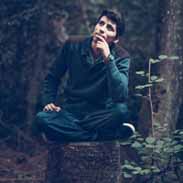Art History 100 Final Exam Terms – Flashcards
Unlock all answers in this set
Unlock answersquestion
Baroque art
answer
visual arts and building design and construction produced during the era in the history of Western art that roughly coincides with the 17th century.
question
tenebrism
answer
Italian, tenebroso (murky), also called dramatic illumination, violent contrasts of light and dark, and where darkness becomes a dominating feature of the image.
question
geners of painting
answer
landscape- natural scenery still life- still object on background genre painting- paintings of everyday life
question
impasto
answer
painting technique where paint is laid on an area of the surface then brush or painting-knife strokes are visible. Paint can also be mixed right on the canvas.
question
Templo Mayor
answer
ain temples of the Aztecs in their capital city of Tenochtitlan, which is now Mexico City.
question
The creation myth of the Aztec (migration and the battle of Coatepec)
answer
aztecs were located on an islandd city in the middle of a lake. footprints in art symbolize migration myth of Coatepec- woman got pregnant by putting dust in chest, 400 siblings go to kill the mom but the son is born fully armored and kills all the siblings
question
Yoruba culture
answer
prolific sculptors, famous for their magnificent terra cotta works throughout the 12th and 14th century; artists also earnests their capacity in making artwork out of bronze
question
Lost-wax casting
answer
the process by which a duplicate metal sculpture (often silver, gold, brass or bronze) is cast from an original sculpture.
question
Olokun
answer
Olokun, the sea god of the Yoruba people, lives in a palace under the sea, with human and fish attendants. His name means "owner of the sea".
question
Rococo
answer
less commonly roccoco, or "Late Baroque", is an 18th-century artistic movement and style, affecting many aspects of the arts including painting, sculpture, architecture, interior design, decoration, literature, music, and theatre.
question
Neoclassicism
answer
Western movements in the decorative and visual arts, literature, theatre, music, and architecture that draw inspiration from the "classical" art and culture of Ancient Greece or Ancient Rome.
question
Romanticism
answer
as an artistic, literary, and intellectual movement that originated in Europe toward the end of the 18th century and in most areas was at its peak in the approximate period from 1800 to 1850.
question
lithography
answer
is a method of printing originally based on the immiscibility of oil and water. Printing is from a stone (lithographic limestone) or a metal plate with a smooth surface.
question
Orientalism
answer
a fascination with Middle Eastern cultures that inspired eclectic 19th century European fantasies of exotic life that often formed the subject of paintings
question
Realism
answer
specific movement in European art during the mid 19th century that associates realism with a social or political meaning
question
daguerreotype
answer
positive print made on a light-sensitzed copper plate (black and white)
question
Modernism
answer
philosophical movement that, along with cultural trends and changes, arose from wide-scale and far-reaching transformations in Western society in the late 19th and early 20th centuries.
question
Impressionism
answer
19th-century art movement that originated with a group of Paris-based artists. Their independent exhibitions brought them to prominence during the 1870s and 1880s, in spite of harsh opposition from the conventional art community in France.
question
primitivism
answer
a belief in the value of what is simple and unsophisticated, expressed as a philosophy of life or through art or literature.
question
Cubism
answer
was one of the most influential visual art styles of the early twentieth century. It was created by Pablo Picasso (Spanish, 1881-1973) and Georges Braque (French, 1882-1963) in Paris between 1907 and 1914.
question
collage
answer
a piece of art made by sticking various different materials such as photographs and pieces of paper or fabric onto a backing.
question
Futurism
answer
celebrated advanced technology and urban modernity.
question
readymade
answer
By simply choosing the object (or objects) and repositioning or joining, titling and signing it, the object became art.
question
Constructivism
answer
artistic and architectural philosophy that originated in Russia beginning in 1919 and was a rejection of the idea of autonomous art. The movement was in favour of art as a practice for social purposes.
question
cantilever
answer
a long projecting beam or girder fixed at only one end, used chiefly in bridge construction.
question
Surrealism
answer
A movement in art and literature that flourished in the early twentieth century. Surrealism aimed at expressing imaginative dreams and visions free from conscious rational control.
question
"Action painting"
answer
a technique and style of abstract painting in which paint is randomly splashed, thrown, or poured on the canvas. It was made famous by Jackson Pollock,
question
combine
answer
combine painting is an artwork that incorporates various objects into a painted canvas surface, creating a sort of hybrid between painting and sculpture. Items attached to paintings might include photographic images, clothing, newspaper clippings, ephemera or any number of three-dimensional objects.
question
Pop Art
answer
art movement that emerged in the mid-1950s in Britain and in the late 1950s in the United States. Pop art presented a challenge to traditions of fine art by including imagery from popular culture such as advertising, news, etc.
question
silkscreen
answer
printmaking technique in which a mesh cloth is stretched over a heavy wooden frame and the design, painted on the screen by tusche or affixed by stencil, is printed by having a squeegee force color through the pores of the material in areas not blocked out by a glue sizing.
question
Feminist Art
answer
of the late 1960s and 1970s, criticized the archaic gender ideals of the early 20th century as well as the art history canon, through the use of art, to create a dialogue between the viewer and the artwork through a feminist lens.
question
Appropriation art
answer
use of pre-existing objects or images with little or no transformation applied to them.



